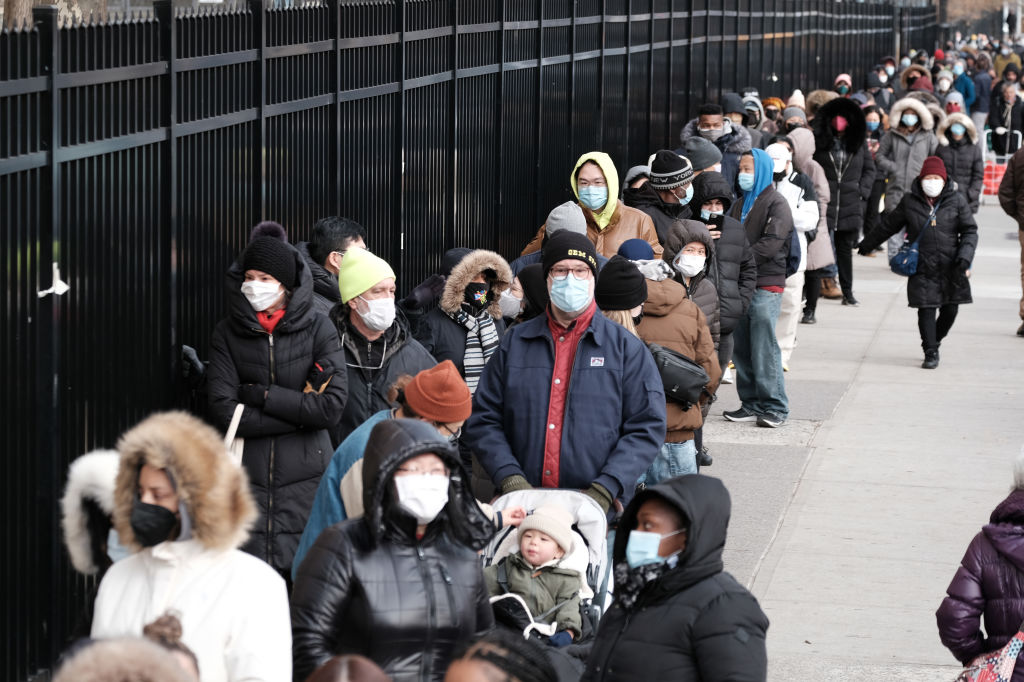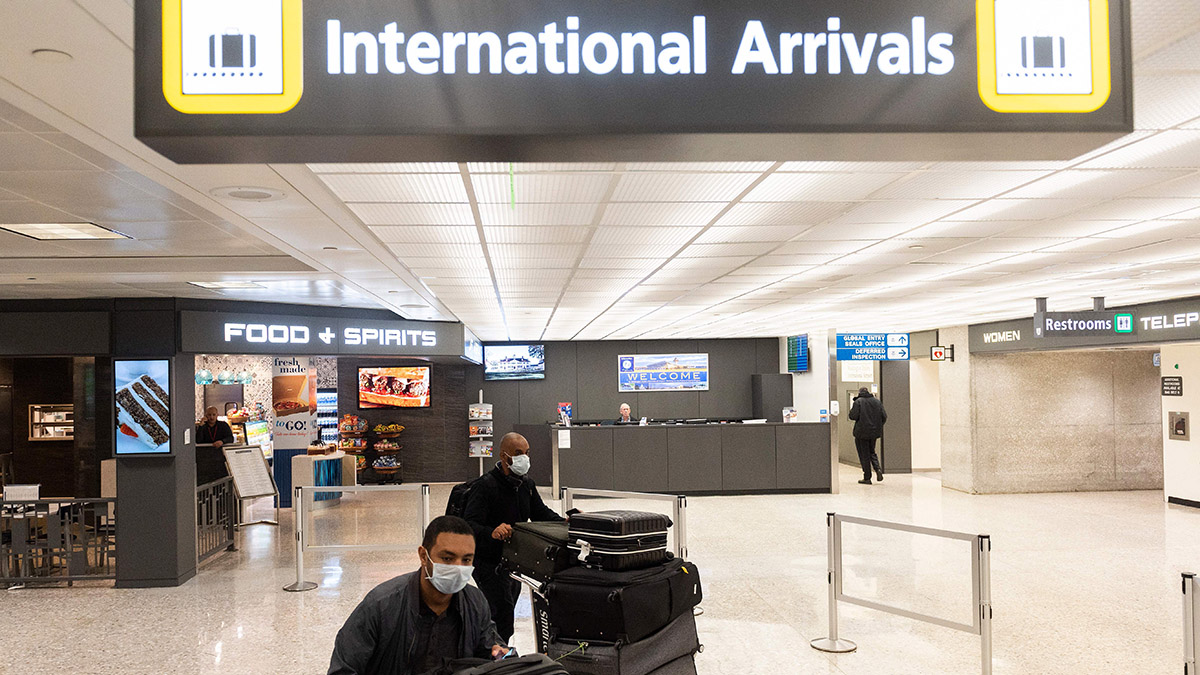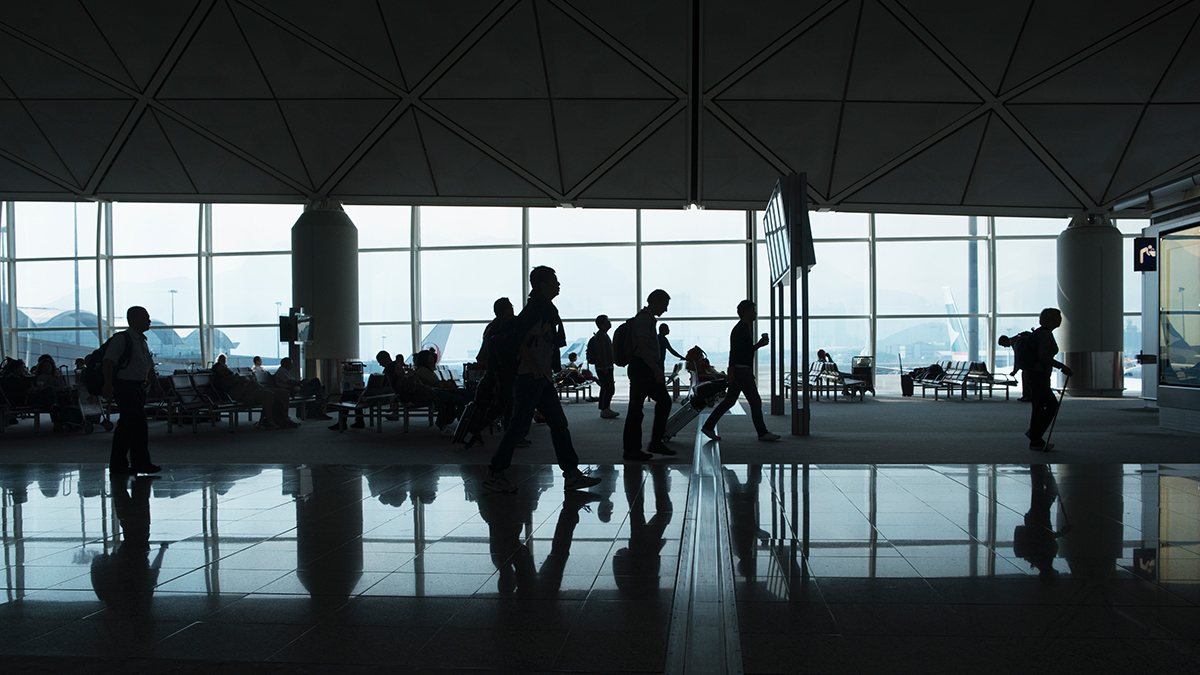What to Know
- NY smashed its all-time daily COVID case record for the eighth time in little more than a week on Sunday as new state data clearly shows vaccine efficacy declines vs. infection but not hospitalization
- More than 49K NYers tested positive, Gov. Kathy Hochul said, an increase of nearly 5,000 over Friday; most of them were in NYC; hospitalizations statewide topped 4,800 Sunday
- Still, officials say there is no reason to panic; yes, the sheer infection increases alone are astonishing, they say, but vaccines are holding up vs severe omicron infection and state and city hospitals are prepared
New York had one of its largest days of testing ever on Christmas Eve, with the state recording more than 400,000 tests (not counting at-home rapid ones) and nearly one in every eight of those came back positive, Gov. Kathy Hochul announced Sunday.
The state fell a few hundred positive results short of an extraordinary milestone, but still set a new single-day record when 49,708 people tested positive for COVID-19. The previous record was set one day earlier and had a whopping 5,000 fewer tests than the new record set on Dec. 24.
Record-setting days are no longer a new feature but rather a byproduct of the fast-spreading omicron variant that became the dominate strain in New York and the rest of the country within a matter of weeks. The state smashed its previous record for most cases in a single day more than a week ago, a record that is not being surpassed by New York City alone. The latest figures showed more than 23,000 people tested positive in the city.
Get Tri-state area news and weather forecasts to your inbox. Sign up for NBC New York newsletters.
And while the true number of COVID-positive people are in New York due to the a surge in at-home testing operations, omicron has clearly already staked its claim. Meanwhile, millions are preparing to travel home after the Christmas holiday is over -- although cancellations during the busiest travel season are sure to complicate matters.
Many of the major airlines have confirmed an increase in COVID sick calls in recent days, forcing the cancellations of more than 1,000 flights across the holiday weekend. New York City-area airports have reported hundreds of cancellations and delays.
Testing significantly dropped off the next day. Hochul said almost 150,000 fewer people tested for the virus, but its not clear whether that was a result of testing access, lab staff over the holiday, or fewer people seeking a test in the final window before Christmas.
In response to the rapidly shifting terrain and current dominant variant, Hochul on Friday announced modifications to New York's return-to-work COVID policies for essential workers by shortening the period of required isolation to five days.
That shortened window applies to essential workers who are both fully vaccinated and asymptomatic as well as to fully vaccinated workers who had mild symptoms that resolved and no fever for 72 hours without fever-reducing medication, Hochul said. They also have to wear masks upon return. Testing is not required.
See the state's complete updated return-to-work guidance for essential personnel here, as well as who is defined as essential personnel.
The tweak incorporates the latest guidance from the CDC, which shortened its recommended isolation window for healthcare workers a day ago, and the milder infections with omicron, which are knocking out huge chunks of workforces just because of high positivity rates alone. Many such positive workers don't show symptoms or show mild symptoms and do not need medical treatment to recover.
Hospital managers, including the head of the largest public health care system in the U.S., Dr. Mitchell Katz of NYC Health + Hospitals, say they're wary about staffing shortages for similar reasons -- and far more than they're worried about an influx of people seriously sick with omicron. That's what Hochul is trying to accommodate.
"Positive cases don't necessarily mean that you are too sick and require hospitalization. We just have to again, manage," Hochul said Friday. "This is not delta. This is not the first variant. This is omicron which thus far, and again I have to qualify this, thus far, has demonstrated as we've watched around the globe and other places where it hit first, that it's not as severe in its impact."
"Therefore, we want to make sure that our critical workforce who we've relied on from the beginning ... that our workers can get back," she added, referring to those who work in sectors like healthcare, eldercare, home healthcare, sanitation, grocery stores, pharmacies and restaurants. "You're the ones that got us through the first many months of anxiety. We need you, again, we need you to be able to go to work."
As she has done in multiple briefings this week, Hochul acknowledged the sheer volume of cases linked to omicron but downplayed the severity associated with the surge, saying again, "this is not the same situation we had in March 2020 or even last winter's surge. We’ve had more testing. We’ve had more opportunities."
Still, hospitalizations, especially among the unvaccinated, are continuing to rise, Hochul said --and her prime concern is having sufficient hospital staff to treat them.
The governor's Friday hospitalization update included a 5% day-over-day spike in hospitalizations, which have now topped 4,700 and stand at their highest levels since mid-March. The next day, state data showed almost 4,900 hospitalizations across New York, a number that is still well short of the 7,000 New Yorkers who were hospitalized with COVID this time last year, Hochul said.
The state's latest recent high in daily deaths was about 60 (Hochul added 69 more to the rolling toll Friday), and while some of the mounting hospitalizations could add to the fatality count, daily death rates remain mercifully below the devastating highs of the early pandemic, when 800 New Yorkers were dying every 24 hours.
Both metrics are to be monitored closely, Hochul said, especially amid a week that has seen the state shatter its own COVID record at least half a dozen times.
New York, like many states, has seen hours-long lines for COVID testing amid soaring national demand. Hochul says the state has sent 600,000 tests to New York City at the end of last week and is working to bring more direct resources.
Five more testing sites will open next week, one in each borough. The state has also launched 37 new pop-ups and plans 17 more in New York City. Another 13 test sites launch across the state Wednesday. Appointments open starting Monday.
"We're focusing on high need areas, but also our smaller communities that may not have had the resources to put these up and we're also focused on making sure we continue to support New York City, a place that because of its dense population we know is more vulnerable," Hochul said.
Ultimately, officials say vaccinations will quell the increases in hospitalizations and deaths associated with the omicron wave -- and those metrics are a much greater concern for them than infections alone. That's why they're urging calm at this time -- and pushing vaccinations and COVID boosters for those who have to get them.
Hochul has remained adamant there will be no new COVID-related shutdowns in New York amid this explosive omicron surge, and while she acknowledges omicron appears more adept at evading vaccine protection when it comes to infections, state data shows that's not true with more severe cases.
The chart lines below, part of the state's breakthrough data reporting, clearly show the decline in vaccination effectiveness against infection is far sharper than the drop in effectiveness against hospitalization.
New Daily Cases Over Time by Vaccination Status
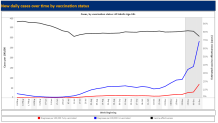
New Daily Hospitalizations Over Time by Vaccination Status
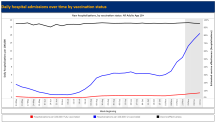
Perhaps most importantly, data by age shows vaccinations have the highest continued efficacy rate against severe illness for the older, and likely more vulnerable, age groups.
The rate of effectiveness for those aged 65 and older is 97.1% for the latest week of study (Dec. 13), which is actually higher than the efficacy rate for the comparable week a month earlier (95.9%). That could reflect higher booster rates for that population as well. By comparison, efficacy against hospitalization is down slightly (93.8% from 94.5%) for those aged 50 to 64 and 18 to 49 (94.1% from 95%).
The 65-and-older group also has higher vaccine efficacy now against infections than they did in the Nov. 15 week (93.3% currently, up from 90.6%). Efficacy against infections is down, again marginally, for the 50-to-64 group (77.3% from 79%). New Yorkers aged 18 to 49 have seen the starkest declines in vaccine efficacy against infection (66.4% this latest week, down from 76.6% Nov. 15).
More Coverage
The data supports repeat assurances from Hochul, Mayor Bill de Blasio and public health experts like CDC Director Dr. Rochelle Walensky and Dr. Anthony Fauci that there is no overwhelming need to panic. While the surging numbers are frightening for many, the omicron wave should peak very high and very fast, then end, they say.
The first U.S. omicron case was reported on Dec. 1. It took the heavily mutated variant less than three weeks to establish its dominance in America. United and Delta airlines have been forced to cancel holiday flights because of high staff infections and hospital managers say they're wary about staffing shortages for similar reasons -- and far more than they're worried about an influx of sick people.
The sheer infectiousness of omicron alone is taking essential workers out of play -- and nowhere is the transmissibility more evident than in the New York area.
The CDC estimates more than 90% of current cases in the New York area -- one that for its genomic surveillance purposes includes New York, New Jersey, Puerto Rico and the Virgin Islands -- are the omicron strain. That's up from 25% last week.
As Hochul said this week, the winter surge is upon us and New Yorkers should expect cases to continue to rise. But they can also expect to reduce their chances of severe COVID-related illness through vaccinations and boosters.
Ninety-five percent of all New York adults have gotten at least one vaccine dose, Hochul said Friday. She called that a milestone. There's still a ways to go.
"Thanks to vaccines and boosters, our fight against the pandemic is going better than last Christmas but we still must ensure we're taking the proper precautions to keep each other safe this holiday season," Hochul said in a statement Friday.
"Get vaccinated, get the booster if you're already vaccinated, and make sure to mask up and wash your hands—especially if you're visiting elderly loved ones," she added. "Take care to protect your most vulnerable loved ones who join you around the dinner table this weekend, and let's make sure we're enjoying a healthy Christmas and happy holiday season."

